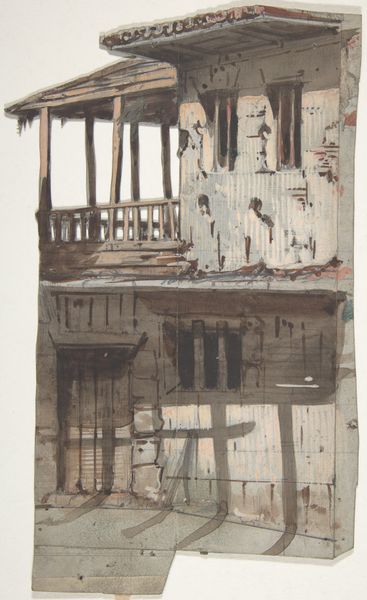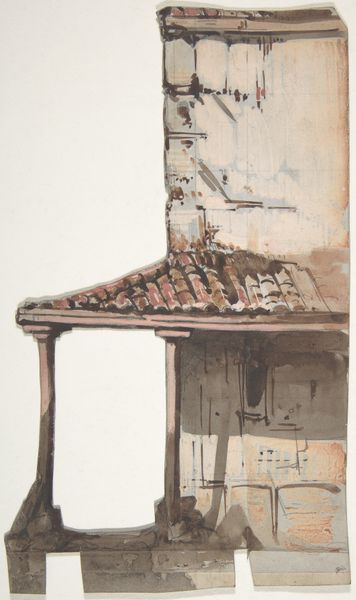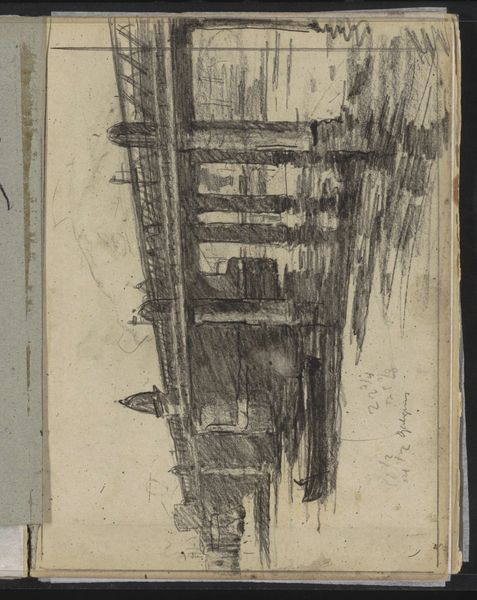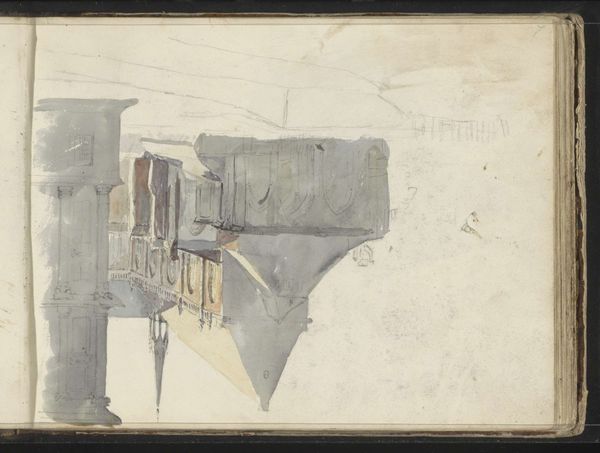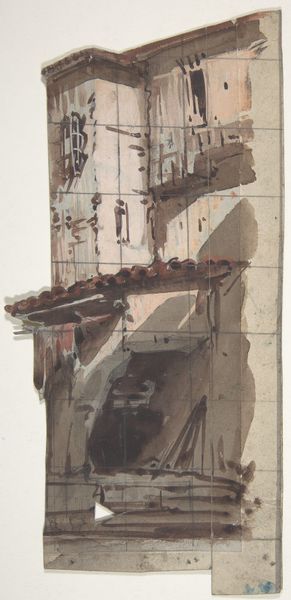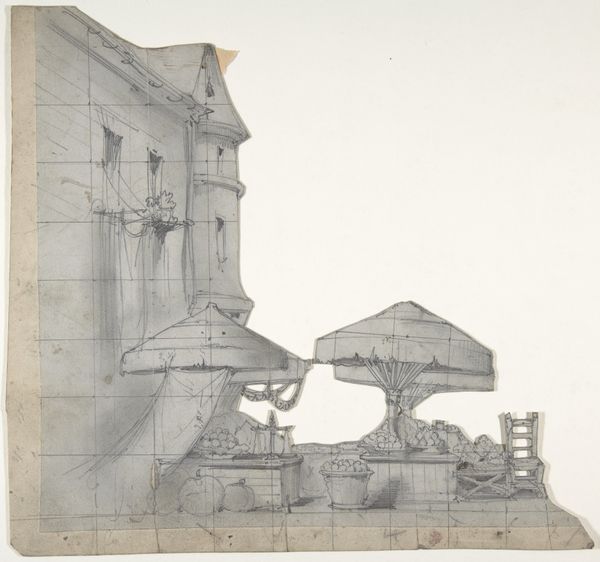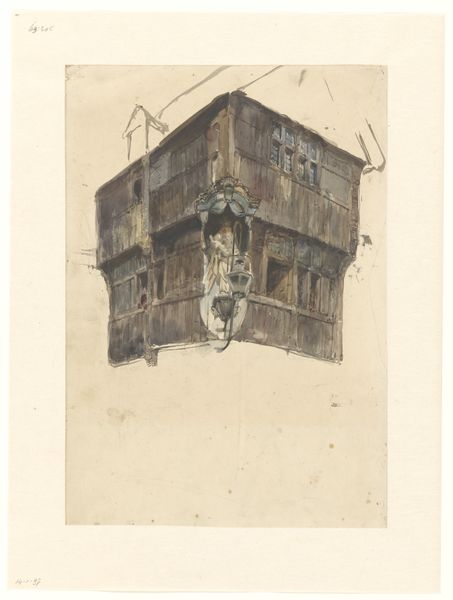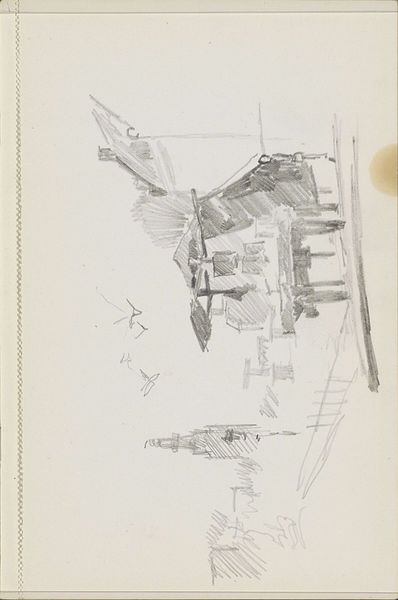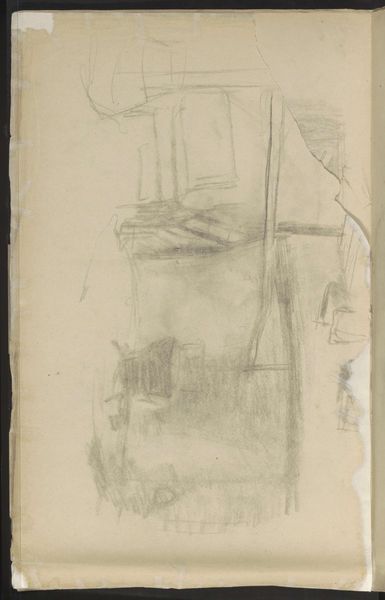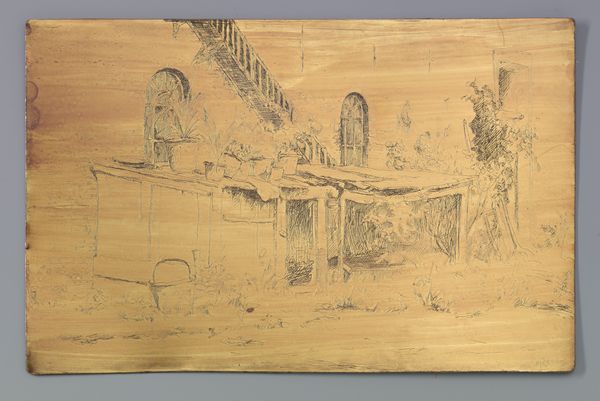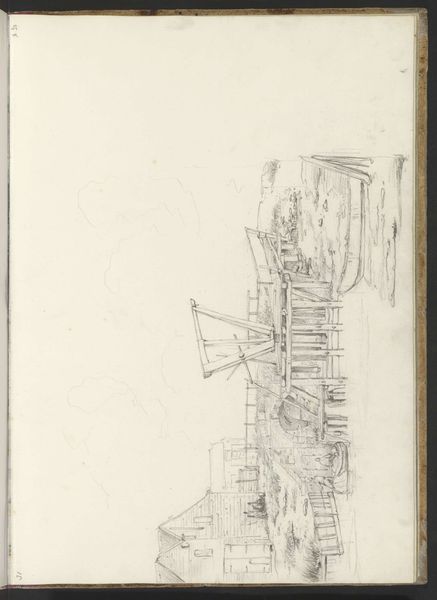
Design for a Stage Set at the Opéra, Paris 1830 - 1890
0:00
0:00
Dimensions: Irregular sheet: 7 1/16 x 5 3/16 in. (17.9 x 13.2 cm)
Copyright: Public Domain
Editor: This is Eugène Cicéri’s “Design for a Stage Set at the Opéra, Paris,” created sometime between 1830 and 1890, rendered in watercolor, colored pencil, and ink on paper. It looks like a building facade in disrepair, but something about its incompleteness feels quite intentional. What do you see in this piece, especially given its function as a stage design? Curator: It's compelling to consider this design through a lens of theatricality and social critique. We see Romanticism's fascination with ruins, but not in isolation. Stage designs reflected societal ideals and anxieties. Considering that opera during this period was heavily associated with class and social status, how might the dilapidation presented here act as a commentary on the potential fragility of those structures? Does it question the stability of the elite, or perhaps romanticize their downfall? Editor: That's a really interesting angle, I hadn't considered it as potentially subversive. I just thought it looked like cool Romantic scenery. The decay almost feels picturesque, even… Curator: Exactly. And it's that tension – the beautiful rendering of decay – that complicates the image. Think about the power structures inherent in the Opéra itself. Who gets to create these illusions, and for whom? The Romantic era had its own form of dramatic politics; are the remnants displayed a celebration, a critique, or something in between? Who benefits, or is excluded, from this spectacle? Editor: So it’s not just about pretty backdrops, it is potentially reflecting and refracting power? It does make you wonder about the artist's intentions. Thanks for pointing that out! Curator: Precisely. And recognizing those nuances allows us to engage with the artwork on a much deeper level. Now, what does this consideration tell us about the relevance of historical art to contemporary social debates?
Comments
No comments
Be the first to comment and join the conversation on the ultimate creative platform.
